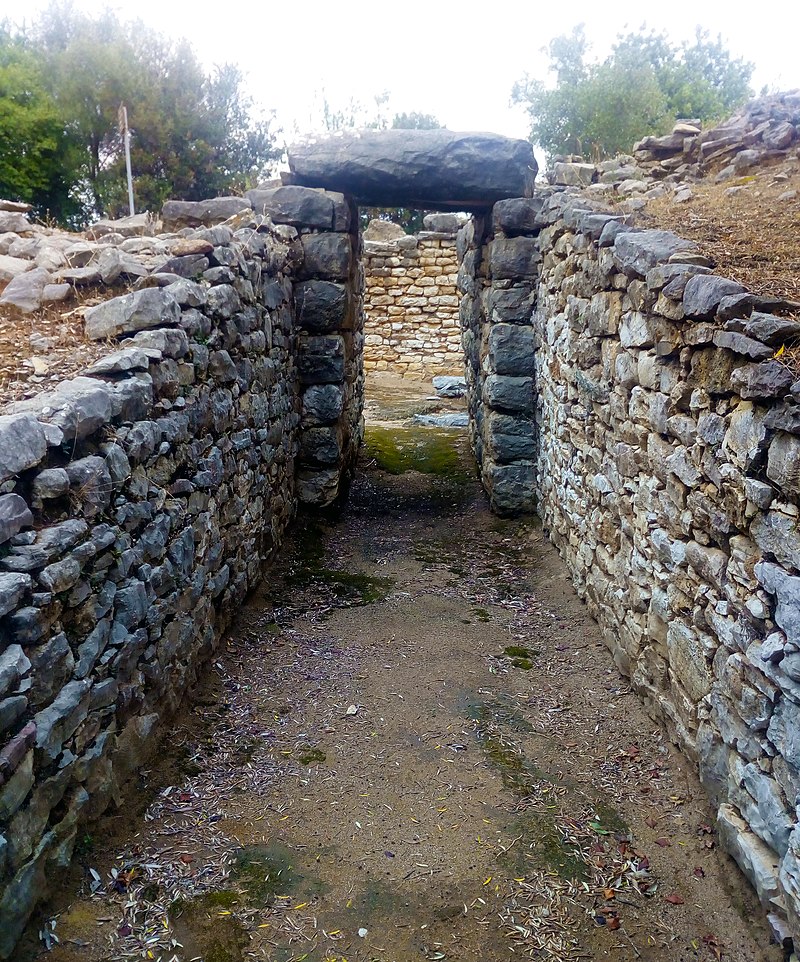The Rise of Athens (508-448 BCE)
Prior to the rise of Athens, Sparta, a city-state with a militaristic culture, considered itself the leader of the Greeks, and enforced an hegemony. In 499 BCE, Athens sent troops to aid the Ionian Greeks of Asia Minor, who were rebelling against the Persian Empire during the Ionian Revolt. This provoked two Persian invasions of Greece, both of which were repelled under the leadership of the soldier-statesmen Miltiades and Themistocles, during the Persian Wars. In the decades that followed, the Athenians, with the help of the Spartans and other allied Greek city-states, managed to rout the Persians. These victories enabled Athens to bring most of the Aegean, and many other parts of Greece, together in the Delian League, creating an Athenian-dominated alliance from which Sparta and its allies withdrew.
Athenian Hegemony and the Age of Pericles
The 5th century BCE was a period of Athenian political hegemony (the power of one state over another), economic growth, and cultural flourishing that is sometimes referred to as the Golden Age of Athens. The latter part of this time period is often called The Age of Pericles. After peace was made with Persia in the 5th century BCE, what started as an alliance of independent city-states became an Athenian empire. Athens moved to abandon the pretense of parity among its allies, and relocated the Delian League treasury from Delos to Athens, where it funded the building of the Athenian Acropolis, put half its population on the public payroll, and maintained the dominant naval power in the Greek world. With the empire’s funds, military dominance, and its political fortunes as guided by statesman and orator Pericles, Athens produced some of the most influential and enduring cultural artifacts of Western tradition, during what became known as the Golden Age of Athenian democracy, or the Age of Pericles. The playwrights Aeschylus, Sophocles, and Euripides all lived and worked in Athens during this time, as did historians Herodotus and Thucydides, the physician Hippocrates, and the philosopher Socrates.
Pericles was arguably the most prominent and influential Greek statesman, orator, and general of Athens during its Golden Age. One of his most popular reforms while in power was to allow thetes (Athenians without wealth) to occupy public office. Another success of his administration was the creation of the misthophoria, a special salary for the citizens that attended the courts as jurors. As Athens’ ruler, he helped the city to prosper with a resplendent culture and democratic institutions.
Athenian Society
Classical Athenian society was structured as a democratic patriarchy that strived towards egalitarian ideals.
In the Assembly of the People, Athenian citizens decided matters of state. In theory, it was composed of all the citizens of Athens; however, it is estimated that the maximum number of participants it included was 6,000. Since many citizens were incapable of exercising political rights, due to their poverty or ignorance, a number of governmental resources existed to encourage inclusivity. For example, the Athenian democracy provided the following to its population:
- Concession of salaries to public functionaries
- Help finding work for the poor
- Land grants for dispossessed villagers
- Public assistance for war widows, invalids, orphans, and indigents
In order to discourage corruption and patronage, most public offices that did not require specialized expertise were appointed by lot rather than by election. Offices were also rotated so that members could serve in all capacities in turn, in order to ensure that political functions were instituted as smoothly as possible regardless of each individual official’s capacity.
Athenians in the Age of Pericles
The Athenian elite lived modestly and without great luxuries compared to the elites of other ancient societies. Wealth and land ownership was not typically concentrated in the hands of a few people. In fact, 71-73% of the citizen population owned 60-65% of the land. By contrast, thetes occupied the lowest social class of citizens in Athens. Many held crucial roles in the Athenian navy as rowers, due to the preference of many ancient navies to rely on free men to row their galleys. During the reforms of Ephialtes and Pericles around 460-450 BCE, thetes were granted the right to hold public office.
Boys were educated at home until the age of seven, at which time they began formal schooling. Subjects included reading, writing, mathematics, and music, as well as physical education classes that were intended to prepare students for future military service. At the age of 18, service in the army was compulsory.
Athenian women were consigned to the care and upkeep of the family home. Athenian society was a patriarchy; men held all rights and advantages, such as access to education and power. Nonetheless, some women, known as hetaeras, did receive an education with the specific purpose of entertaining men, similar to the Japanese geisha tradition. Hetaeras were considered higher in status than other women, but lower in status than men. One famous example of a hetaera is Pericles’ mistress, Aspasia of Miletus, who is said to have debated with prominent writers and thinkers, including Socrates.


